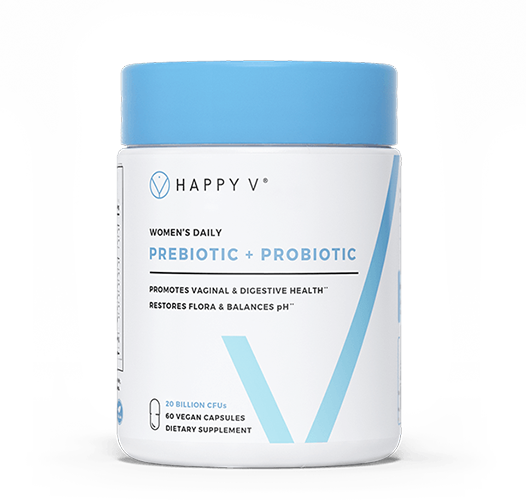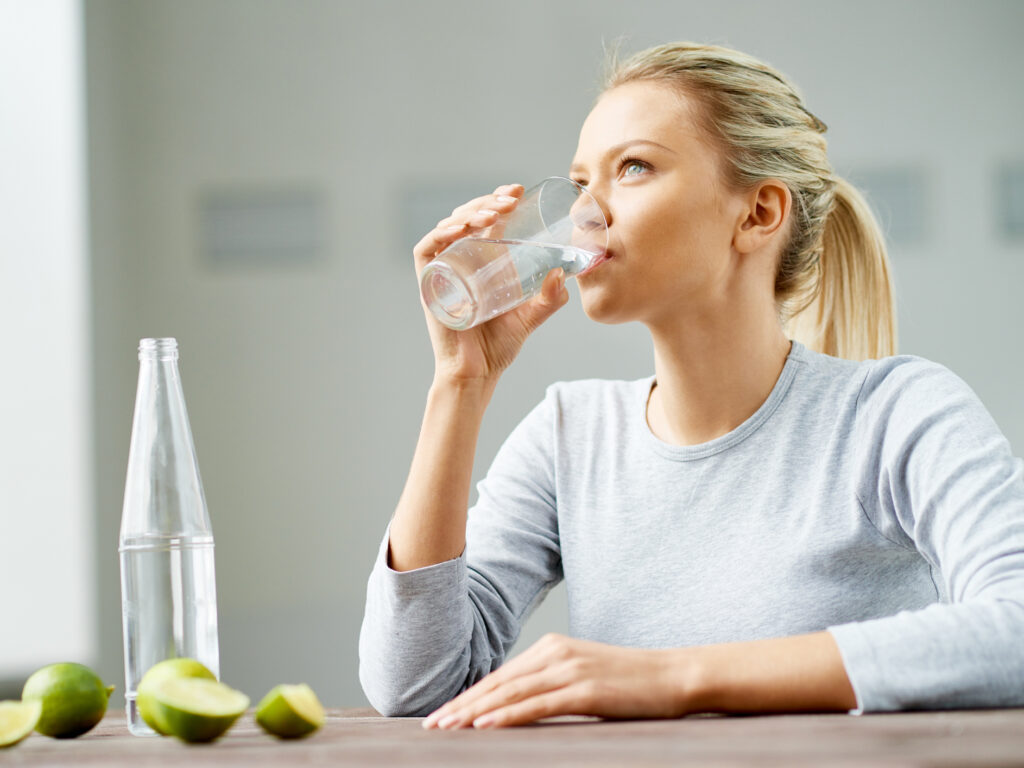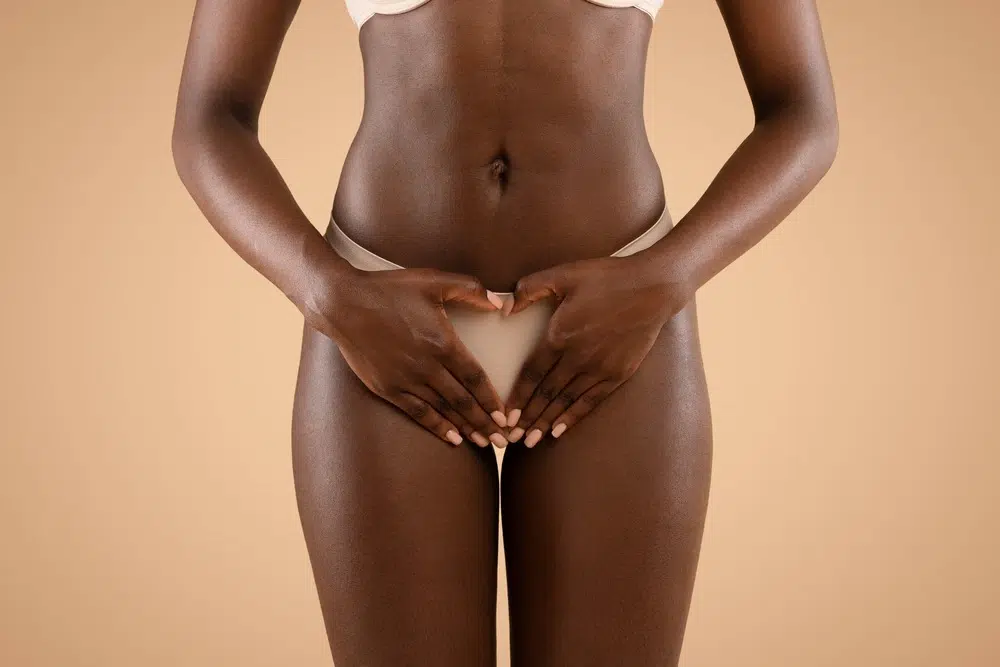- Water helps maintain your vaginal pH, flush fungi and other toxins from your body, and prevents fungi overgrowth by diluting their favorite food — sugar!
- To flush a yeast infection, start by drinking 8-10 glasses of water a day, and if you notice signs of dehydration, drink more water or eat more water-rich foods.
- Daily probiotics are another way you can try to fight a yeast infection at home, though they are also a great way to support everyday vaginal health.
- If you notice your yeast infection symptoms aren’t improving or are experiencing yeast infection symptoms alongside fever, pelvic pain, or vaginal bleeding, call your doctor.
Water can do, well, just about anything! It can improve your digestion, promote weight loss efforts, and improve your skin. But can it actually help to flush infections from your body, specifically vaginal yeast infections?
That’s what we’re talking about today because, chances are, you have probably experienced a yeast infection at least once in your life and are maybe even experiencing one right now! And while antifungals are an important part of treatment, there are other things you can do at home to get rid of your infection.
Understanding Yeast Infections

Next, we’ll be diving into how water can help flush yeast infections, but first, let’s talk about how lack of water may contribute to infection in the first place.
Yeast infections are caused by an overgrowth of fungus within the vagina, most often a fungus called Candida albicans. When this overgrowth occurs, you often experience symptoms like vaginal itching, discomfort when urinating or having sex, sores or bumps, and thick, cottage cheese-like vaginal discharge.
Though dehydration doesn’t cause yeast infections, it can contribute to them. Hydration is essential for maintaining your vagina’s slightly acidic pH, and your vagina’s pH is important because it kills bad microbes, like Candida albicans, before they have the chance to cause infections. If you consistently lack hydration, it can throw your pH off balance, making it harder to fight bad bacteria.
The Role of Water in Flushing Out Yeast Infections

Water not only plays a role in preventing vaginal infections like yeast infections; it can actually help to flush an active infection out of your body. How? Well, there are two main ways.
First, when you drink more water, you have more trips to the bathroom, and more frequent urination helps flush excess yeast and toxins from the body1. Second, when you drink more water, you are diluting sugar levels throughout your body. And you know what yeast loves to eat? Sugar! So when you drink more water, you are diluting yeast’s food source and preventing its growth2, 3.
But exactly how much water do you need to drink to get these two great benefits? Keep reading!
How Much Water to Drink to Flush Out Yeast Infections

Generally, when it comes to drinking water to flush out a yeast infection, most doctors recommend 8-10 glasses a day, though this can vary quite a bit based on your age, weight, activity level, and climate.
The best way to know if you are drinking the right amount of water is to listen to your body. If you are thirsty, that’s a sign you need to drink more water! Also if you go to the bathroom and notice that your urine is dark in color or cloudy, that’s another sign you are dehydrated and need more water. Ideally, your urine should be very light yellow, even almost clear!
If you feel like you are drinking all the water you can stomach and still experiencing signs of dehydration, remember that you can get water through foods, too, especially fruits and vegetables like melons, oranges, bell peppers, and celery.
Additional Ways to Get Rid of Yeast Infections at Home

Along with increasing your water intake, there are other natural remedies you could utilize, too, to help fight a yeast infection at home, the biggest being vaginal probiotics.
Probiotics are good bacteria that keep your vagina functioning as it should. One of the most important probiotics for vaginal health is called Lactobacillus. Lactobacillus helps to maintain your vaginal pH, which is slightly acidic to prevent bacteria and yeast overgrowth. By taking daily probiotic supplements that contain these clinically proven strain of Lactobacillus, like Happy V’s Prebiotic + Probiotic, you are balancing the levels of good bacteria in your vagina to help fight off the bad4.
While probiotics have some really promising science, there are other natural remedies, too, particularly tea tree oil and garlic tablets, both of which have natural antifungal properties. Just talk to your doctor before starting these to make sure you are taking them correctly.
Lastly, you will want to prevent your genital area from becoming too moist, since moisture fuels the growth of fungi. You can do this by wearing breathable cotton underwear, avoiding tight-fighting clothing, and changing clothes promptly after working out or swimming.
When to Seek Medical Assistance

While the home remedies we just described are all safe and backed by science, they should not attempted until your doctor confirms diagnosis, since yeast infections share symptoms with other common vaginal infections.
Also, if you continue to experience symptoms despite taking these natural remedies or experience symptoms accompanied by fever, pelvic pain, or unusual vaginal bleeding, call your doctor right away. And if you ever experience recurrent vaginal yeast infections, meaning more than four per year, reach out to your doctor so they can help you investigate why these infections keep happening.
A Holistic Approach to Vaginal Health

Vaginal health is about more than clearing infections. It’s about adopting a lifestyle that supports a healthy vaginal microbiome. This lifestyle includes things like:
- Practicing safe sex
- Not douching
- Avoiding scented soaps and washing
- Managing underlying health conditions like diabetes or HIV

Also, while daily probiotics can help fight an active yeast infection, they are also a great way to support everyday vaginal health by replenishing your levels of good bacteria. Just make sure to look for probiotics like Happy V’s that are doctor-formulated to contain those clinically proven strains of Lactobacillus!
- Candida albicans: A type of fungus commonly responsible for yeast infections.
- pH: A scale measuring acidity or alkalinity; the vaginal pH is slightly acidic to prevent infections.
- Lactobacillus: A genus of bacteria important for maintaining vaginal health by balancing the microbiome and preventing overgrowth of harmful bacteria or yeast.
- Antifungals: Medications used to treat fungal infections like yeast infections.
- Probiotics: Live bacteria and yeasts that are good for your health, especially for maintaining a healthy balance of gut and vaginal microbiota.
- Vaginal Microbiome: The community of microorganisms that naturally inhabit the vagina, contributing to its health and function.
-
- Vanhaecke T, Bretin O, Poirel M, Tap J. Drinking Water Source and Intake Are Associated with Distinct Gut Microbiota Signatures in US and UK Populations. J Nutr. 2022;152(1):171-182. doi:10.1093/jn/nxab312. https://pubmed.ncbi.nlm.nih.gov/34642755/
- Hills RD Jr, Pontefract BA, Mishcon HR, Black CA, Sutton SC, Theberge CR. Gut Microbiome: Profound Implications for Diet and Disease. Nutrients. 2019;11(7):1613. Published 2019 Jul 16. doi:10.3390/nu11071613. https://www.ncbi.nlm.nih.gov/pmc/articles/PMC6682904/
- Basson AR, Rodriguez-Palacios A, Cominelli F. Artificial Sweeteners: History and New Concepts on Inflammation. Front Nutr. 2021;8:746247. Published 2021 Sep 24. doi:10.3389/fnut.2021.746247. https://www.ncbi.nlm.nih.gov/pmc/articles/PMC8497813/
- Cleveland Clinic. Should you take probiotics for vaginal health? Cleveland Clinic. April 30, 2024. Accessed May 2, 2024. https://health.clevelandclinic.org/probiotics-for-vaginal-health
- Mashatan N, Heidari R, Altafi M, Amini A, Ommati MM, Hashemzaei M. Probiotics in vaginal health [published correction appears in Pathog Dis. 2023 Jan 17;81:]. Pathog Dis. 2023;81:ftad012. doi:10.1093/femspd/ftad012. https://pubmed.ncbi.nlm.nih.gov/37286796/
- A-
- A+






